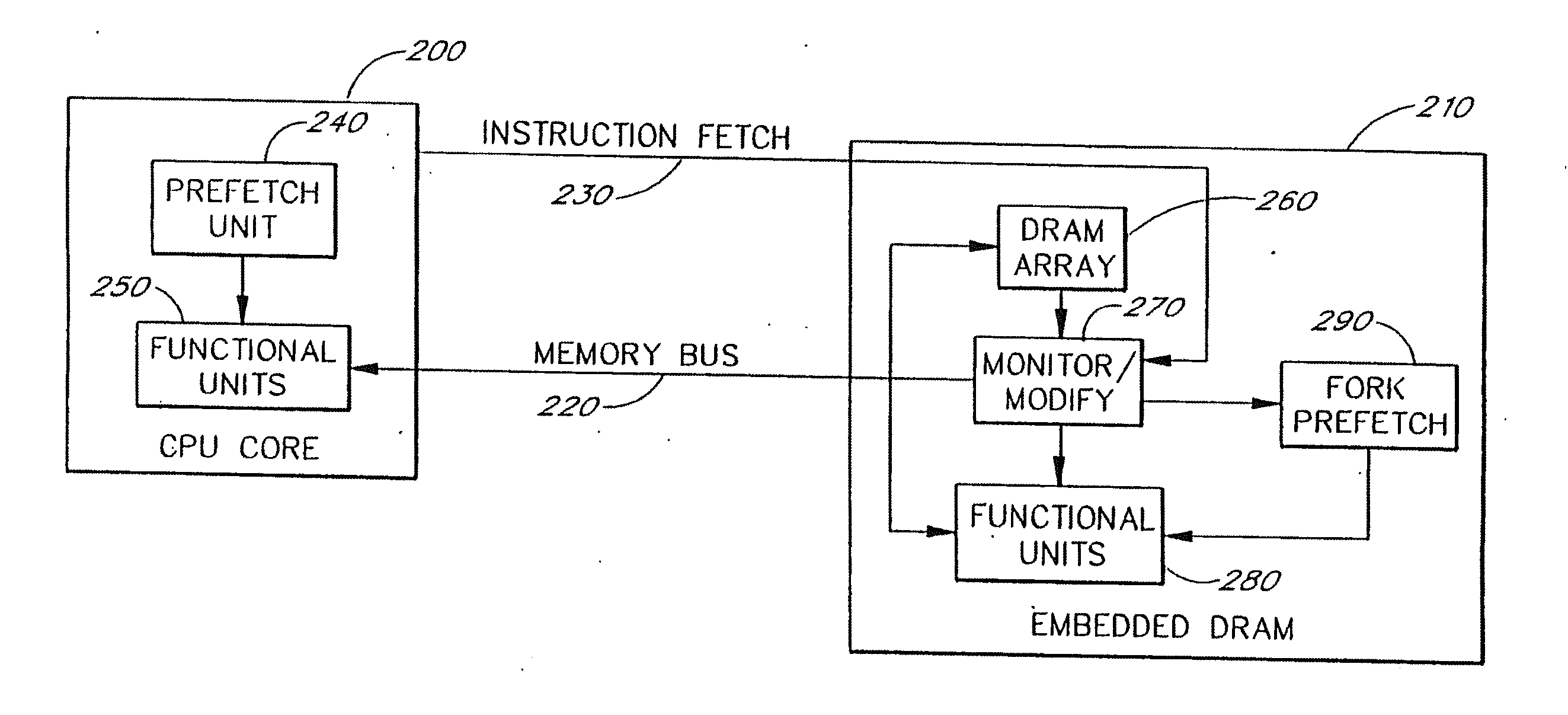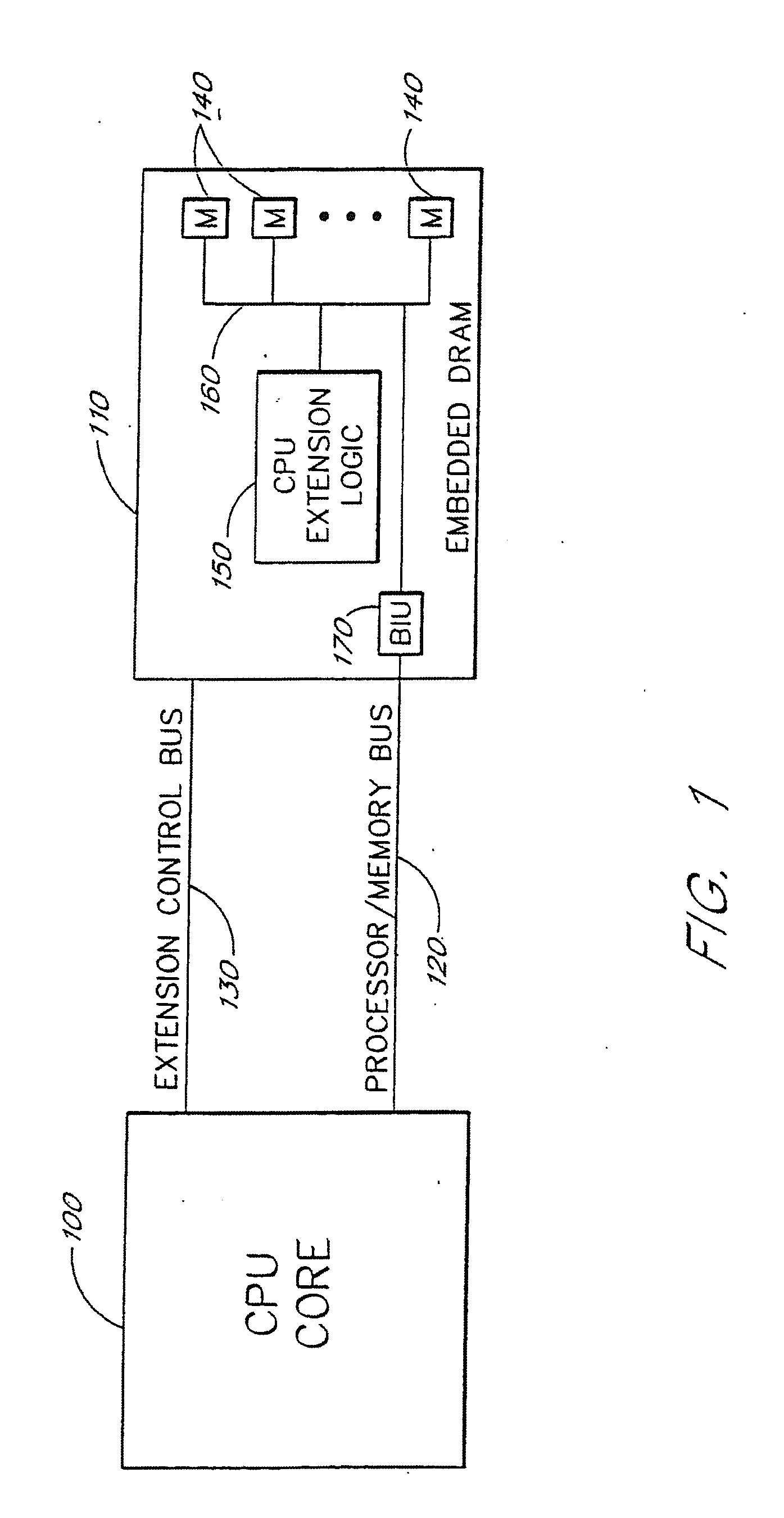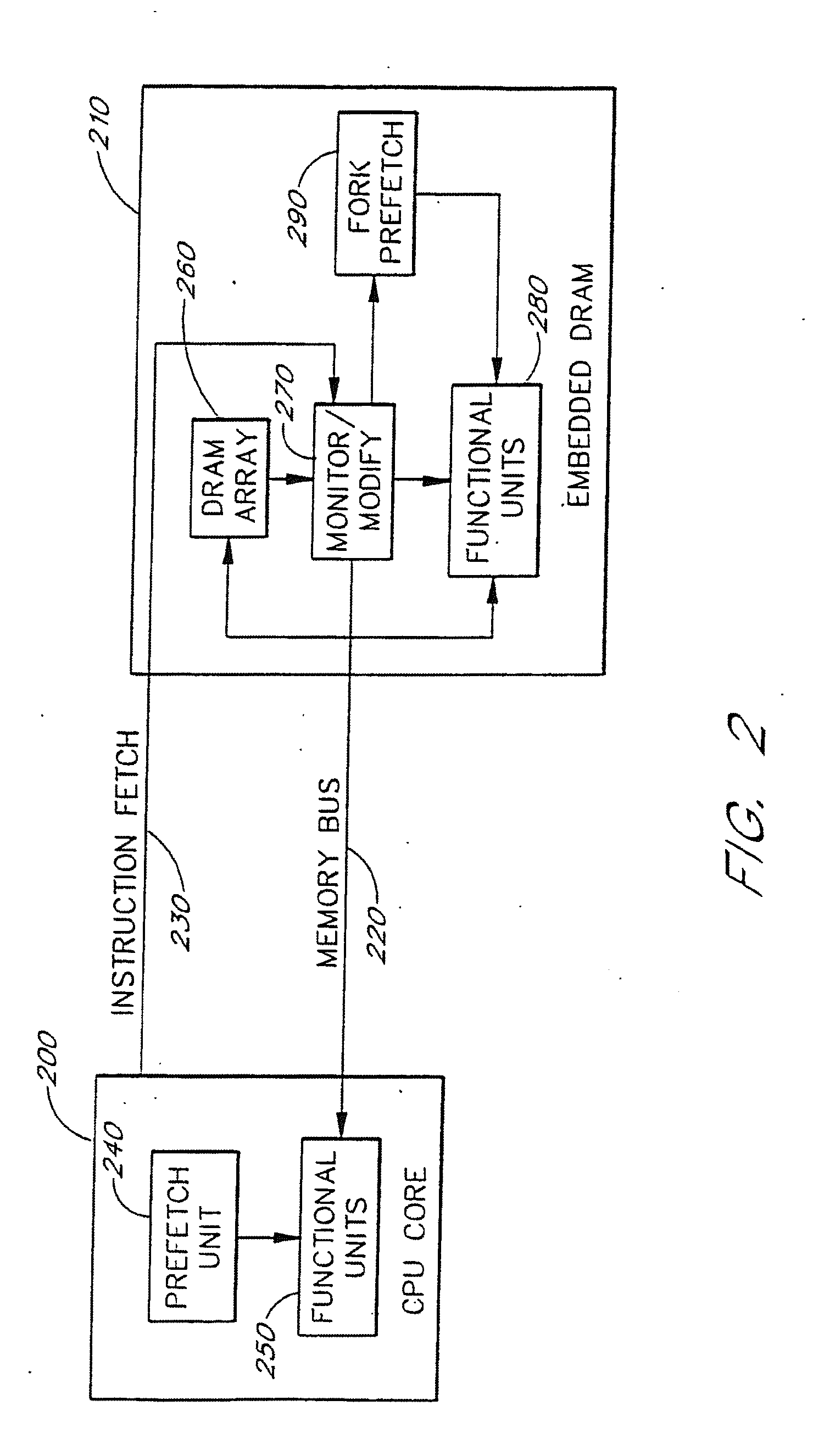Split embedded dram processor
a processor and embedded technology, applied in the field of microprocessors and embedded dram architectures, can solve the problems of large amount of data traffic between the memory and the processor, inability to build caches large enough to hold, and inability to so as to minimize data bussing traffic and achieve the effect of effectively cache instructions and data
- Summary
- Abstract
- Description
- Claims
- Application Information
AI Technical Summary
Benefits of technology
Problems solved by technology
Method used
Image
Examples
Embodiment Construction
[0056]FIG. 1 is a high level block diagram of an embodiment of a split architecture comprising a CPU 100 with an embedded DRAM extension 110 according to the present invention. The CPU 100 is coupled to the embedded DRAM 110 via a standard memory bus connection 120 and an optional extension control bus 130. The embedded DRAM 110 includes a DRAM memory array 140 which is coupled to an embedded logic CPU extension 150 via an internal bussing structure 160. Data transfers between internal bus 160 and external bus 120 are bidirectionally buffered and optionally queued by bus interface unit (BIU) 170. External transactions over the bus 120 are controlled via external control signals generated by the CPU 100 or via internal control signals generated by the CPU extension 150. In this system, the memory interface bus 120 carries address and control information to and possibly from the memory, and carries data back and forth between the CPU 100 and the embedded DRAM 110. The memory interface...
PUM
 Login to View More
Login to View More Abstract
Description
Claims
Application Information
 Login to View More
Login to View More - R&D
- Intellectual Property
- Life Sciences
- Materials
- Tech Scout
- Unparalleled Data Quality
- Higher Quality Content
- 60% Fewer Hallucinations
Browse by: Latest US Patents, China's latest patents, Technical Efficacy Thesaurus, Application Domain, Technology Topic, Popular Technical Reports.
© 2025 PatSnap. All rights reserved.Legal|Privacy policy|Modern Slavery Act Transparency Statement|Sitemap|About US| Contact US: help@patsnap.com



